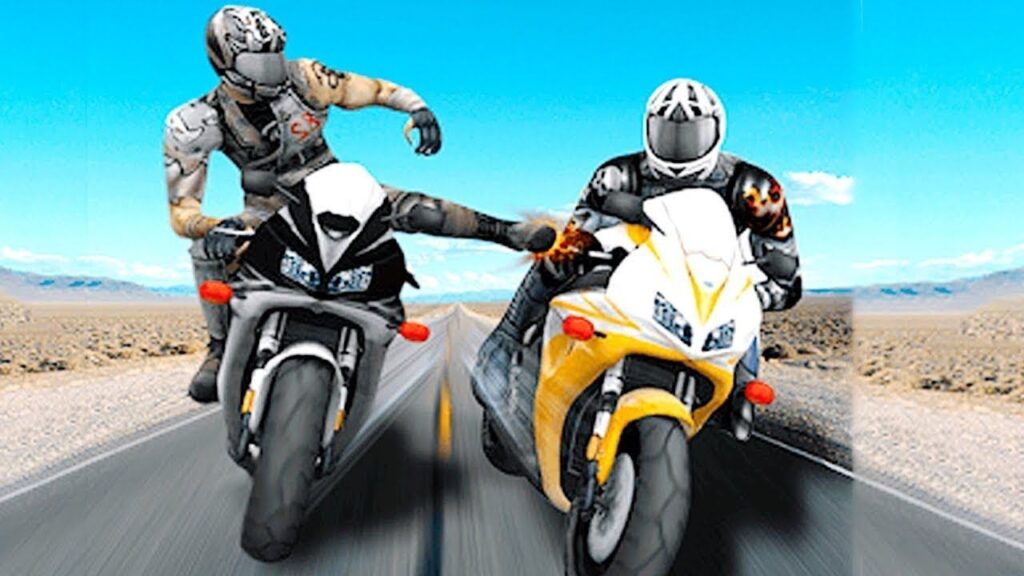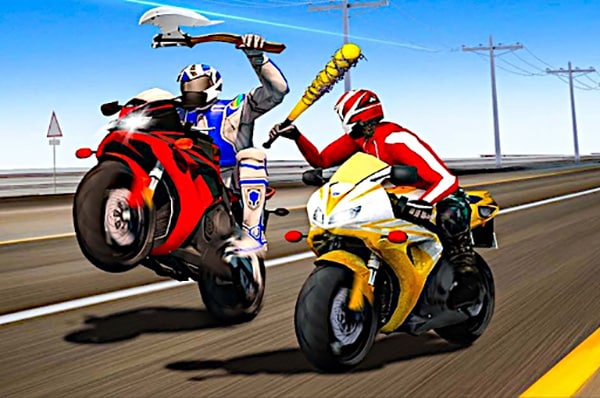In the vast landscape of gaming, motorcycle games have carved out their own niche, offering players an exhilarating experience that simulates the freedom and adrenaline rush of riding on two wheels. From realistic simulations to high-octane arcade thrills, motorcycle games have evolved over the years, becoming a diverse genre that caters to a wide range of players. Let’s take a deep dive into the world of moto games, exploring their history, evolution, and the immersive experiences they offer.
Evolution of Motorcycle Games: From Pixels to Realism
The journey of motorcycle games traces back to the early days of gaming when pixelated graphics and simple controls dominated the scene. Titles like “Excitebike” on the Nintendo Entertainment System (NES) provided a glimpse into the potential of motorcycle-themed gaming. As technology advanced, so did the realism of these games.
The transition from 2D to 3D graphics marked a significant leap forward. Games like the “Road Rash” series in the 1990s introduced players to a more immersive experience, combining fast-paced racing with hand-to-hand combat. As gaming consoles and PCs became more powerful, developers could push the boundaries of realism, giving rise to titles like “MotoGP” and “RIDE,” which aimed to replicate the physics and dynamics of actual motorcycle racing.
In recent years, virtual reality (VR) has taken motorcycle gaming to a whole new level. VR headsets allow players to feel like they are truly on the bike, experiencing the rush of wind, the roar of the engine, and the twists and turns of the road. This technological evolution has brought unparalleled realism to the genre, creating an immersive virtual ride for players.
Diverse Gameplay Experiences: Simulation vs. Arcade
One of the defining aspects of motorcycle games is the diversity in gameplay experiences. On one end of the spectrum, there are realistic simulations that meticulously recreate the physics and handling of motorcycles. Games like “TT Isle of Man” and “MotoGP” fall into this category, requiring players to master the intricacies of braking, leaning, and accelerating to navigate the tracks successfully.
On the other end, arcade-style motorcycle games prioritize fun and accessibility over strict realism. Titles like “Road Redemption” and “Trials Rising” focus on delivering high-energy, fast-paced action with over-the-top stunts and explosive crashes. These games appeal to a broader audience, offering a more casual and approachable experience.
The choice between simulation and arcade-style gameplay often comes down to personal preference. Some players crave the authenticity of a true-to-life motorcycle simulation, relishing the challenge of mastering the virtual ride. Others prefer the adrenaline-fueled chaos of arcade-style games, reveling in the thrill of outrageous jumps and intense races.
Iconic Titles and Series: From Classics to Modern Hits
Over the years, certain motorcycle games have etched themselves into the annals of gaming history. The “Road Rash” series, originating in the early ’90s, is remembered fondly for its unique blend of motorcycle racing and combat. Players could wield weapons, punch opponents, and engage in a gritty, competitive road race.
The “MotoGP” series, a staple in motorcycle racing games, has consistently delivered realistic experiences for fans of the sport. With officially licensed tracks, teams, and riders, these games allow players to step into the boots of their favorite motorcycle racing stars and compete for glory on the world stage.
In the realm of arcade-style gameplay
, the “Trials” series has gained a devoted following. Known for its physics-based approach to motocross, players navigate obstacle courses, performing daring stunts and attempting to conquer challenging terrain. The series has evolved over the years, maintaining its addictive gameplay while introducing new features and environments.
“RIDE” is another notable series that caters to motorcycle enthusiasts, offering an extensive lineup of bikes and customization options. It places a strong emphasis on the visual and technical aspects of motorcycles, allowing players to not only race but also build and modify their dream bikes.
In the open-world category, “Grand Theft Auto: San Andreas” has left an indelible mark. While not exclusively a motorcycle game, its expansive virtual world provided players with the freedom to explore on two wheels. The game’s motorcycle culture, including bike gangs and customized rides, added a layer of depth to the overall experience.

Innovations in Motorcycle Gaming: Virtual Reality and Beyond
As technology continues to advance, motorcycle games are embracing innovations that enhance the overall gaming experience. Virtual reality, in particular, has opened new frontiers by immersing players in a 360-degree virtual environment. Titles like “RideVR” and “Moto Racer VR” leverage VR technology to offer a more visceral and lifelike experience, allowing players to turn their heads and feel the rush of wind as they speed down virtual highways.
Beyond VR, advancements in graphics and game physics contribute to the realism of motorcycle games. Dynamic weather, realistic lighting, and accurate representations of motorcycle mechanics add layers of authenticity. This commitment to realism extends to sound design, where the roar of engines and the screech of tires contribute to the immersive quality of the gaming experience.
Multiplayer functionality has also become a focal point for many motorcycle games. Online multiplayer modes enable players to compete against friends or strangers in real-time, adding a social dimension to the virtual ride. Cooperative gameplay, team-based challenges, and competitive racing leagues further enhance the multiplayer experience, fostering a sense of community among motorcycle gaming enthusiasts.
Challenges and Future Outlook
While motorcycle games have come a long way, they are not without challenges. Achieving a balance between realism and accessibility remains an ongoing goal for developers. Striking the right chord between a simulation’s depth and an arcade game’s approachability is crucial to catering to diverse player preferences.
Additionally, the industry faces the perennial challenge of staying ahead of technological advancements. As hardware capabilities evolve, developers must continually push the boundaries of graphics, physics, and AI to deliver cutting-edge experiences.
The future of motorcycle gaming holds exciting possibilities. The integration of emerging technologies like augmented reality (AR), artificial intelligence (AI), and haptic feedback systems could elevate the immersive qualities of these games even further. Imagine feeling the rumble of the engine through a controller or experiencing virtual weather conditions that affect the handling of your virtual motorcycle.
Conclusion: Riding into the Future
Motorcycle games have transcended the limitations of pixels and controllers to provide players with immersive and dynamic experiences. Whether you’re a fan of realistic simulations that replicate the nuances of motorcycle racing or prefer the adrenaline-fueled chaos of arcade-style gameplay, the world of motorcycle games offers something for everyone.
As technology continues to evolve, motorcycle games are poised to reach new heights of realism and innovation. The thrill of the virtual ride, the roar of the engine, and the rush of wind against your virtual face—all these elements contribute to the enduring appeal of motorcycle games. So, gear up, rev the engine, and get ready for a virtual journey on two wheels like never before. The road ahead is boundless, and the future of motorcycle gaming is full of exciting twists and turns.


